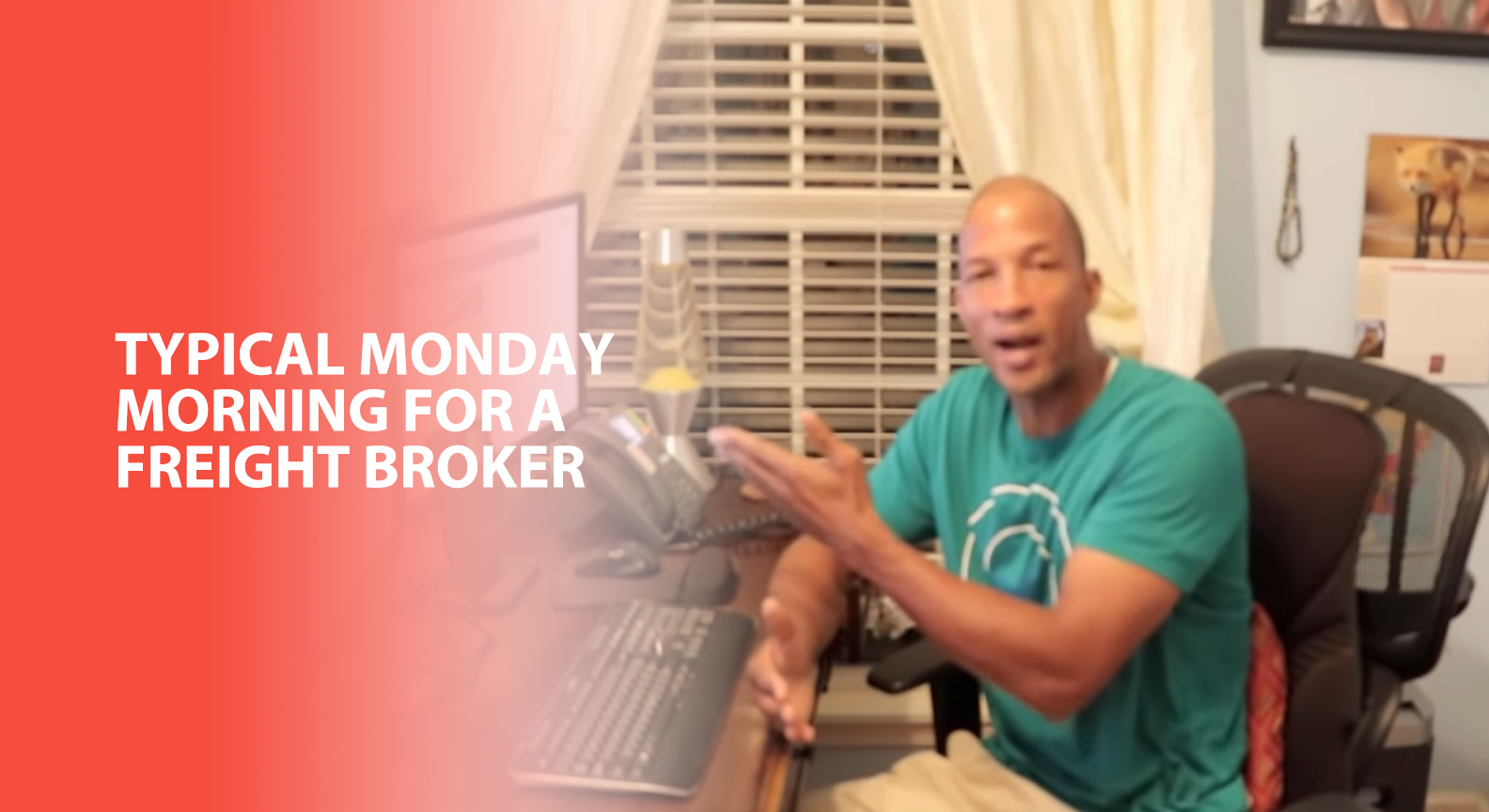VIDEO TRANSCRIPT:
Today, we’re discussing the typical Monday Morning for me as a freight broker. As you already know, one of the first things I do on Monday morning is I start very early in the morning. I think that is so instrumental to our success that we get out of the bed very, very early.
I usually get up around 2:30 or 3 o’clock some mornings and sometimes it’s a little bit later than that, around 3:30 or 4 o’clock. But on Monday Morning, usually about 3 AM.
And, the purpose of that is to get my video out. I want to get that first video out very early so that I can focus on my business and what is involved with the rest of my day.
As a freight broker, one of the first things that I’m going to do, after that video is completed, is to pull up both of my transportation management systems. I have one that’s a personal TMS and one that I work inside of for my customer. Now, as I mentioned before, some of your customers will require that you work inside their TMS system, you’ll be moving loads inside of their TMS system and that’s great!
It allows for you to go in and make bids on loads at any time. So that’s the good thing about being able to work within your customers TMS because it always gives you access to the loads that are available in your particular lane.
You can grow a successful freight broker business—I’ll show you how!
CLICK HERE to learn more about our Freight Broker Training Course.
So, that’s one of the first things that I’m going to do. I’m going to start to check my TMS first to make sure that all of my loads are closed out, are covered, are good to go. If I have loads that have not been delivered, I’m going to look and make sure that I know the delivery date is today, this is the delivery time. Once it’s come to that delivery time then I’m going to be calling that carrier to make sure that that particular shipment has dropped safely and the bills are clean.
Now, of course, on the TMS where my customers are concerned, that’s where I’m going to go in and look for what loads I’ll be bidding on. I’m going to look for lanes that I already have assets for and we’ll expand that as time goes. But usually, the lanes that we have assets in are the lanes that we bid on, now, after I’ve done that I’m going to pull up my load boards.
I want to take a look at my LoadBoards before I provide any bids to my customer I’m going to look at see what is truck capacity like in the lanes I’m going to bid on.
Because, truck capacity has a huge impact on what that rate will be in that lane.
You don’t want to start to give rates without checking truck capacity because if you can get it in a lane and truck capacity is not sufficient than the price is going to go up much higher.
And, if you’ve already given a price back to your shipper, now you can’t get that load moved, it doesn’t look good. So, we want to make sure that we’re providing solid quotes based on solid information.
Information that we’ve gone to our system to check to make sure that what we say is what we’re going to be able to do. We always want to be able to do that.
Now, one last thing I wanted to talk to you about before I depart is making appointments. It’s all about learning in this business. As a freight broker, I learn something new every single day because you get the opportunity to move freight. And, when you get the opportunity to move freight those are opportunities to learn how you can service your customer. That is the best way in my opinion to learn how to serve your customer, is to get freight and go through the process.
Now, one of the things I have learned is that appointment times are very important and they effect rate hugely.
What do I mean? Let’s say I have a load that usually picks up in the afternoon, usually I schedule that load to pick up at 3 PM.
Now, when that load picks up at 3 PM, it has to go 300 miles. So, I am going to make sure that I have the earliest available appointment for the next day delivery. The next day delivery is between 6 AM and 1 PM. So, I don’t want to get a 10 o’clock or 11 o’clock appointment, I want to get the earliest time available so I always shoot for the 6 AM.
What it allows for that carrier to do is to pick that load up at 3 PM and then to be able to get off of that load at 6 AM and move on to his next load. We don’t want that carrier to have to wait until 8, 9, or 10 o’clock to get off of that load because the earlier the better usually for that carrier.
So, if you wait until after you’ve gotten the tender—the authorization to move the load—and then you wait to make that appointment it’s very likely that the appointment time may be already gone.
So, as soon as you get authorization to move that load, you want to go ahead and set up your delivery time and your pick up time.




